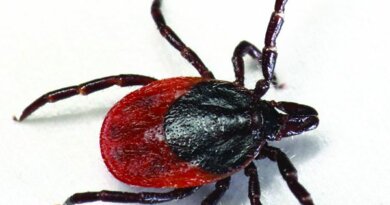Stolen Heads Shine a Light on Body Part Donation
March 10, 2022 — It’s not your typical theft, but it’s definitely one that grabs your attention.
Last weekend in Denver, thieves broke into a parked truck and stole a blue-and-white box labeled “exempt human specimen.” Turns out those particular specimens were donated human heads.
While Denver police continue their search for the stolen property, many are left wondering how donated heads — and other body parts — are sourced and used in the first place.
In this case, the box of heads was headed to a company called Science Care, based in Phoenix, AZ. The company bills itself as the world’s leading body donation authority, connecting donors and pharmaceutical companies, medical device makers, educational institutions, and health care organizations. In this case, the stolen box was going back to Science Care after a medical training event.
“Science Care links donors who choose to donate their body to science with medical researchers and educators all over the world, leading to medical research and training that improves the quality of life for all of us,” says Tricia Hammett, CEO and program director at the company. “As the first accredited non-transplant tissue bank in the world, we pride ourselves on compliance and safety in everything we do.”
It’s important to understand the difference between this type of donation program and the organ and tissue transplant industry. The latter is governed by the federal government and works to locate and transport organs and tissues for the more than 100,000 Americans on the national transplant waiting list. The former type of program remains largely unregulated and is not involved in transplantation.
Instead, non-transplant tissue donation can lead to many different outcomes. One example is taking cadaver tissue and using it for medical and surgical purposes. Think ACL repair, whereby a cadaver tendon replaces the living damaged ligament, giving the recipient a new lease on knee health. Or harvesting cadaver veins to use in heart bypass surgeries. Both are common and deliver better quality of life.
Other uses for cadaver tissue include medical research and teaching. Medical schools depend on these donations to educate their students. Research institutions work with donated human tissues to advance treatments for a host of medical conditions. These can include a variety of types of cancer, heart disease, orthopedics, and even mental health. By using organ and body-part donations, medical surgical students can also learn how to perform organ and tissue transplants, practicing their skills on the donated parts before advancing to the real, life-saving procedures.
Donated tissues can also play a role in the development of medical and surgical devices, even robotics for medical purposes. This can lead to less invasive procedures, with faster recovery times, and can apply to a host of surgeries.
So about those stolen human heads, in particular — how might they be useful to science? Researchers might use them to study human brains for the advancement of Alzheimer’s treatment, for instance. Or scientists could study brain tissue to better understand how the brain regulates emotions or learning.
Thefts like the one in Denver remain rare, and the investigation continues somewhat under the radar due to its sensitive nature. Hammett says the company is working closely with Denver authorities for a resolution: “We are doing everything we can to locate the stolen tissue and protect the community.”





Citation Wang J, Li Y cialis on line Is it Easy to Detect
I was diagnosed in January of 2013 but the pain started in August of 2012 but I ignored it as I was busy taking care of my beloved mother buy cialis online in usa
Pingback:meritking
Pingback:grandpashabet
Pingback:meritking
We mustn t get in the way of those voices can i buy cialis online According to some people, Clomid can help increase testosterone levels and reduce estrogen levels in the body
Pingback:meritking giriş
Pingback:fuck google
Pingback:child porn
Pingback:porn
free dark web darknet drug store dark web websites
drug markets dark web the dark internet darknet market links